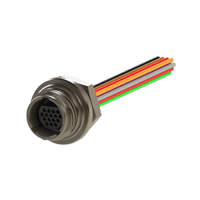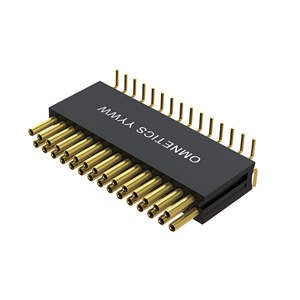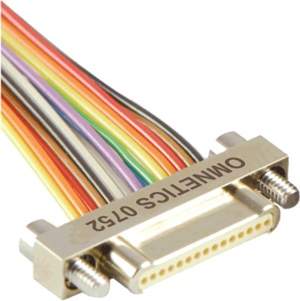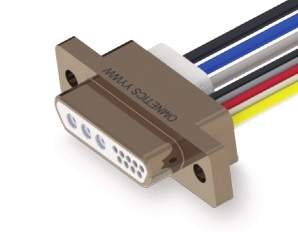Omnetics’ Nano-D Connector Proves Versatility

As electronic miniaturisation becomes more prevalent throughout many industries, the Nano-D connector has proven to be a versatile interconnect style. These connectors originated in the military market, but they are now being used in unexpected and different applications than they were originally designed for. As more markets begin utilising these high-reliability miniature interconnects, the Nano-D has established itself as a player in these diverse applications.
Perhaps one of the most unique areas in which Omnetics is seeing this connector being utilised is within the animatronics and robotics industry. When you step into a ride at a theme park, you’ll see your favorite characters moving around and interacting with you. For every movement an animatronic robot makes, a connector pairing is needed. The animatronics designers previously used cheaply made connectors, but switched to a military-style miniature connector to withstand the repetitive and constant motion of the robotics.
Many people might not think of these animatronic robots as needing highly reliable connectors, but with the many connectors needed for each robot and the high amounts of shock and vibration happening within them, a reliable connection is paramount. In addition, if a connector fails within these animatronics, it can lead to serious downtimes and lost revenue at the park. As soon as the animatronics fail, the rides themselves must close down, which has large implications on revenue. So while there was originally a cost savings in buying cheaper plastic style interconnects, theme parks have serious implications on revenue if these connectors don’t perform. The Nano-D connector is just the answer. While maintaining the high density form factor that allows these connectors to be designed into tight spaces within these animatronics, the high reliability aspect eliminates the chance of failure. Utilising the Omnetics flex pin design in conjunction with meeting the strict standards of the Mil 32139 specification, the Nano-D connectors have experienced zero failures since introduction into these parks.
Another nonmilitary style application that Omnetics is seeing significant growth in is the space industry, whether it be for communication, navigation, or earth observation. Satellite companies used to send giant school bus sized satellites into orbit (not much need for a miniature connector there). Now, companies are learning they can get the same functions of these satellites by sending constellations of small satellites into low earth orbit. The launching and building of these small satellites is much more affordable and realistic than putting all your marbles into one larger satellite. The shrinking of the technology allows the Nano-D to come into play. The ability to stack multiple boards and run high signal counts in condensed areas allows these manufacturers to meet the strict size demands that these satellites require. Combined with the additional space level screening per NASA EEE-INST-002, these Nano-D’s are proven to meet the shock and vibe requirements that the payload will face getting up to orbit.
Both of these applications are key examples of how the Nano-D continues to expand its wide variety of uses. As long as the need for miniaturisation or high reliability is a factor, the Nano-D will continue to be a leading option. Check out our Nano-D connector options for reducing size and weight.





